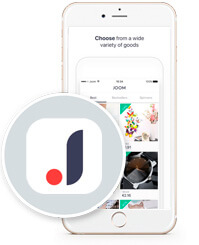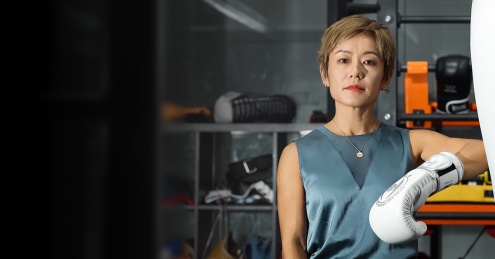Q&A with Mikhail
This Q&A reflects Mikhail's time as Head of Communications at Joompay. Currently, Mikhail is User Acquisition Manager at Playrix.
After starting his career as a UX designer, Mikhail joined Joom, at the time an early-stage e-commerce startup. Mikhail initially played multiple roles, greatly broadening his knowledge of the business. Mikhail now focuses on fraud protection and managing external partners, regularly monitoring campaigns for fraud and analyzing the performance of affiliates.
Read Mikhail's latest article: "4 Strategies to Simplify Your App Marketing Efforts and Improve Results"
In your own words, tell us about the apps that you manage?
Joom is an app marketplace with a mission to let users purchase anything from anywhere in the world, at the best price possible. To achieve this we cut out all the middlemen and bring together factories and merchants across the globe to sell direct to customers. We use advanced technologies, including machine learning and computer vision, to give users the ultimate shopping experience.
How did you get started in mobile marketing?
It was purely by chance. I replied to a job posting for a junior role having no idea what my responsibilities would be. I must say, diving into a complicated field without any prior knowledge can be beneficial. Not knowing anything about the industry, I approached it with no bias.
What do you like most about mobile marketing?
There is never a dull moment. New partners, new ideas, and new types of fraud are always coming. The industry is rapidly growing so it is less important to have five plus years of experience to be a mobile marketer. Instead, your knowledge and an unblurred vision is the key.
What does it take to succeed in mobile marketing?
I don’t think there is one recipe that will lead to success. I do believe, however, that it is essential to approach your work with “a “test and learn mindset, to evaluate what didn’t work and apply those learnings to your next effort.
Given how fast our industry changes, be prepared to test lots of new ideas. Be dynamic and proactive and you will do well in the mobile industry.
What does a quality mobile user look like to you?
In e-commerce, a happy user is a quality user. Meaning he/she is engaging with the app regularly and spreading the word. An ideal user comes with strong retention and positive ROI.
What strategies work best to convert installs into engaged app users?
Become proficient with push notification interaction. Make sure to target the right users at the right time with the right message. This greatly helped us increase our retention rate and improved our UA KPIs. As a result, we increased the scale of our buying as well.
In the past year, what is one tip you can share which made the biggest performance difference with UA or re-engagement of your app?
In the past year, we focused on the diversification of our campaigns. By dividing big campaigns into several smaller ones, we were able to regain control of performance in big countries with diverse populations. This allowed us to set more targeted KPIs for various regions and countries. Ultimately, diversification helped us to lower our CPI while retaining the revenue per user.
How do you stay ahead of changes in technology?
I always stay open to new ideas from our partners. Ideas such as optimizations, product feeds, and sophisticated anti-fraud defense are always welcome. Cooperation should always be a win-win situation, and I am never afraid to test new ideas. I also try to pick up our best practices from one partner and scale these to other partners.
What do you see as the next big thing in mobile marketing?
I look forward to the moment when dynamic product ads become the industry standard everywhere, not just Facebook. While there is a popular belief that dynamic ads are only good for retargeting, I see far greater potential to apply dynamic ads to user acquisition campaigns.
What advice can you offer to help marketers combat mobile ad fraud?
First, make sure to utilize several sources of data. Do not trust a single dashboard or tool.
Second, make your anti-fraud defense layered. A cascade with three or four different filters will work much better than one good filter. These filters need not be expensive. Simple rule-based triggers will protect you.
Lastly, be skeptical when it comes to partners and data. There may be times where all your methods are just not good enough to catch sophisticated fraud. Sometimes you need to trust your instinct and be cautious of cooperation with shady companies.






















